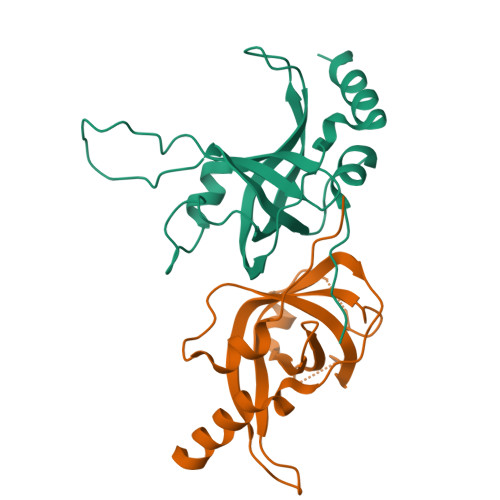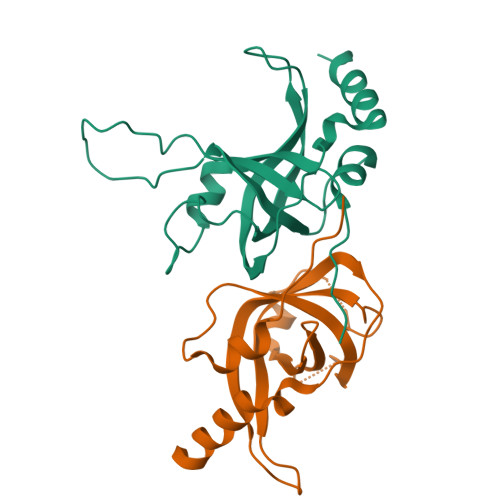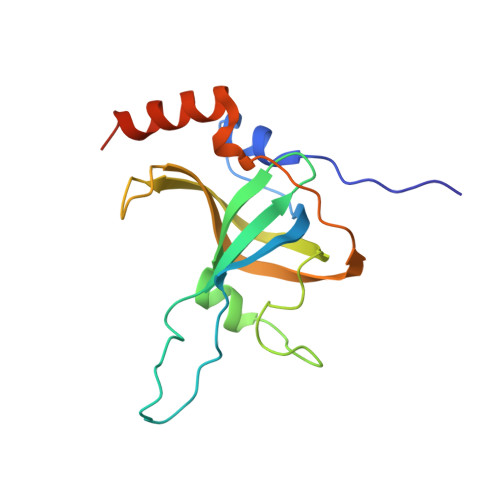The POT1-TPP1 telomere complex is a telomerase processivity factor.
Wang, F., Podell, E.R., Zaug, A.J., Yang, Y., Baciu, P., Cech, T.R., Lei, M.(2007) Nature 445: 506-510
- PubMed: 17237768
- DOI: https://doi.org/10.1038/nature05454
- Primary Citation of Related Structures:
2I46 - PubMed Abstract:
Telomeres were originally defined as chromosome caps that prevent the natural ends of linear chromosomes from undergoing deleterious degradation and fusion events. POT1 (protection of telomeres) protein binds the single-stranded G-rich DNA overhangs at human chromosome ends and suppresses unwanted DNA repair activities. TPP1 is a previously identified binding partner of POT1 that has been proposed to form part of a six-protein shelterin complex at telomeres. Here, the crystal structure of a domain of human TPP1 reveals an oligonucleotide/oligosaccharide-binding fold that is structurally similar to the beta-subunit of the telomere end-binding protein of a ciliated protozoan, suggesting that TPP1 is the missing beta-subunit of human POT1 protein. Telomeric DNA end-binding proteins have generally been found to inhibit rather than stimulate the action of the chromosome end-replicating enzyme, telomerase. In contrast, we find that TPP1 and POT1 form a complex with telomeric DNA that increases the activity and processivity of the human telomerase core enzyme. We propose that POT1-TPP1 switches from inhibiting telomerase access to the telomere, as a component of shelterin, to serving as a processivity factor for telomerase during telomere extension.
Organizational Affiliation:
Department of Biological Chemistry, University of Michigan Medical School, MSRBIII 5301D, 1150 W. Medical Center Drive, Ann Arbor, Michigan 48109, USA.
















